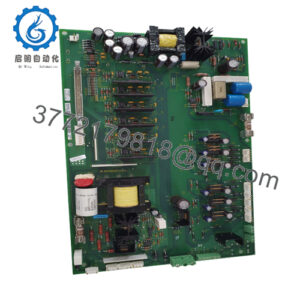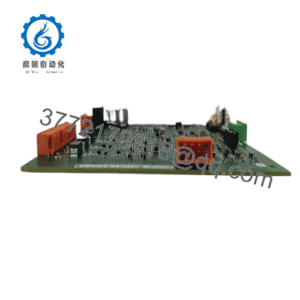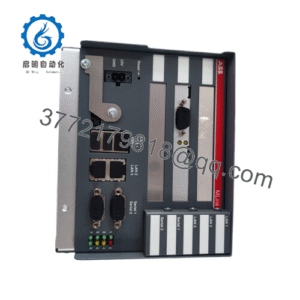Description
| Model Number | PM860 |
| Brand | ABB |
| Type | Mid-Range Programmable Automation Controller |
| Operating Voltage | 24 V DC ± 10% |
| Processing Power | 800 MHz Dual-Core Processor |
| Memory | 1 GB RAM, 4 GB Flash Storage |
| Operating Temp Range | 0°C to 60°C |
| Mounting Style | Backplane Mount (AC500 Series) |
| Dimensions | 90 mm x 150 mm x 110 mm |
| Weight | 500 g |
| Interface/Bus | Ethernet (2x), USB, Backplane Bus |
| Compliance | IEC 61131-2, CE, UL, RoHS, ATEX |
| Supported Protocols | Modbus TCP, Profinet, Ethernet/IP, OPC UA |
| Typical Power Draw | 12 W |
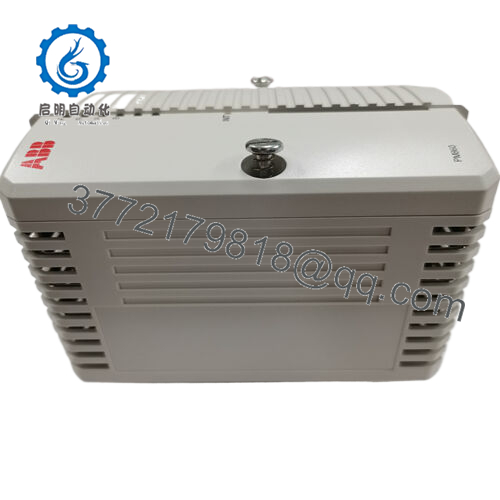
PM860
The ABB PM860 functions as a central processing unit in distributed control systems and large PLC applications, executing control logic, processing real-time data, and coordinating communication between field devices and supervisory systems. Positioned at the heart of mid-sized automation networks, it connects to I/O modules, sensors, and actuators through ABB’s modular backplane system, while communicating with HMIs, SCADA platforms, and enterprise software via industrial Ethernet.
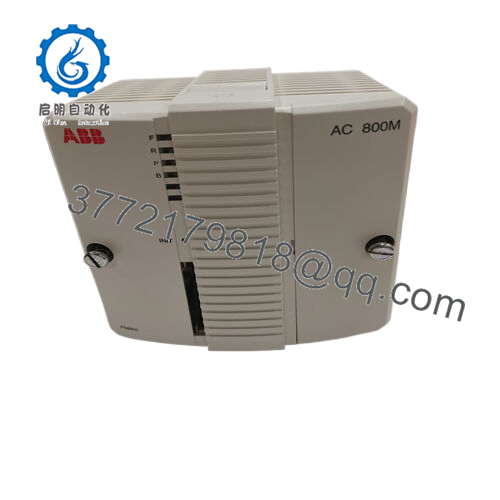
PM860
This integration allows the ABB PM860 to act as a data hub, collecting process variables, executing control algorithms, and distributing commands across connected devices. The controller supports standard programming environments including IEC 61131-3, enabling engineers to implement a range of control strategies from simple sequencing to advanced PID loops and batch control. Its design includes optional redundancy features, ensuring continuous operation by automatically switching to backup systems during hardware or communication failures.
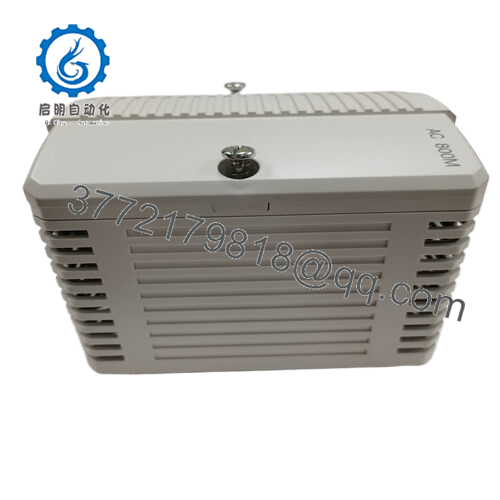
PM860
Main features and advantages:
Selecting the ABB PM860 delivers significant advantages for mid-sized automation systems requiring a balance of performance and simplicity. Its dual-core processor provides ample power for executing dozens of control loops simultaneously, ensuring responsive operation even as processes scale. This processing capability enables precise regulation of critical variables—from temperature and pressure in batch processes to speed and position in material handling systems—without latency issues that could affect product quality or efficiency. The controller’s generous memory capacity supports complex program logic and extended data logging, allowing for detailed process analysis and compliance reporting.
The ABB PM860 enhances system flexibility through its modular architecture, enabling engineers to expand I/O capabilities by adding compatible modules as operational needs grow. Its comprehensive protocol support simplifies integration with both new smart devices and legacy equipment, reducing upgrade costs and minimizing disruption during system transitions. The controller’s compact design saves valuable space in control cabinets while maintaining robust performance, making it suitable for installations where space is constrained. By combining reliable processing with intuitive configuration tools, the ABB PM860 reduces engineering time during setup and commissioning, allowing teams to focus on optimizing process performance.
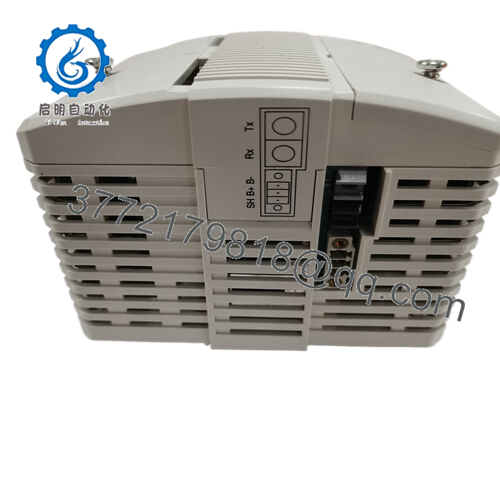
PM860
Application fields:
The ABB PM860 excels in applications where mid-range processing power meets diverse operational demands. In food and beverage manufacturing, it coordinates filling lines, mixing systems, and packaging equipment, ensuring precise control of ingredient dosing and processing times to maintain product consistency and meet food safety standards. Its ability to operate in temperatures from 0°C to 60°C makes it suitable for cold storage facilities and heated production areas alike.
In water and wastewater treatment plants, the ABB PM860 controls pump stations, filtration systems, and chemical dosing processes, maintaining water quality while optimizing energy usage. Building automation systems leverage the controller to manage HVAC, lighting, and security systems across commercial facilities, balancing comfort with energy efficiency. In all these applications, the ABB PM860 supports continuous operation with its reliable design, minimizing downtime and ensuring consistent performance in 24/7 industrial environments.
Related products:
PM850 – Entry-level controller for smaller automation applications with basic requirements.
PM864K01 – Higher-performance variant with enhanced processing for larger systems.
AC500-S Safety CPU – SIL 2/3 certified controller compatible with PM860 for safety-critical functions.
CI853 – Profibus DP communication module for connecting PM860 to legacy networks.
TB820 – Terminal base for secure mounting of PM860 in control cabinets.
PM860-ETH – Expansion module adding two additional Ethernet ports for network segmentation.
3BSE022469R1 – Redundancy kit for implementing fault-tolerant PM860 configurations.
Panel 800 – HMI panel fully integrated with PM860 for local operator control.
Installation and maintenance:
Before installing the ABB PM860, verify compatibility with your existing AC500 backplane system and ensure all connected I/O modules have firmware versions compatible with the controller. Confirm the control cabinet provides adequate cooling, as sustained temperatures approaching 60°C can impact long-term reliability—ensure airflow meets ABB’s recommended 10 m³/h minimum for the installation environment. Check that the 24 V DC power supply delivers stable output with ripple below 50 mV, as voltage fluctuations can affect processing stability and communication reliability. Inspect backplane connectors for contamination or damage, ensuring proper seating to maintain consistent data transfer between the controller and I/O modules. Allocate sufficient space around the controller for wiring access and future expansion modules.
For ongoing maintenance, schedule firmware updates semi-annually using ABB’s Control Builder software to access performance improvements and security enhancements. Monitor processor utilization and memory usage monthly to identify potential capacity issues before they affect system performance. Inspect physical connections quarterly, tightening terminal screws as needed to prevent vibration-related loosening—pay special attention to backplane interfaces and power connections. If using redundant configurations, perform quarterly failover tests to verify automatic switching functionality. Utilize the controller’s built-in diagnostic tools to log and analyze fault data, establishing baseline performance metrics to identify early warning signs of potential issues.
Other ABB product models:
ABB IDM-96
ABB IMCAM07B0000
ABB IMHSS03
ABB IMICV01
ABB IMRIO22
ABB INSUMMCU2
ABB IOR810
ABB IPFAN14
ABB IPMON01
ABB IPMON01
ABB IPS 21-35AD 3BHB017688R0001
ABB IPS21-24V-UL 3BHE032593R0001
ABB IPS21-35AD 3BHB017688R0001
ABB IPSYS01
ABB IRDH275-435
ABB IS200ERDDH1
ABB KPM-4LA41100102V1.2-KB2
ABB KSD211A101 3BHE024313R0101
ABB KSD211A101 3BHE024313R0101
ABB KSD211B 3BHE022455R1101
ABB KSD211B 3BHE022455R1101
ABB KUC711AE 3BHB004661R0001
ABB KUC711AE101 3BHB004661R0101
ABB LM80
ABB LM80.A
ABB LM80.SCP801-F810.LCD2.USBR.G800

 WhatsApp: +86 16626708626
WhatsApp: +86 16626708626 Email:
Email:  Phone: +86 16626708626
Phone: +86 16626708626
